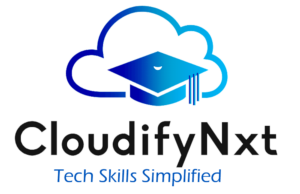
How to Become a Data Scientist ?
Contents
- 1 . Core Programming Skills with Real-World Examples
- 2 2. Advanced Mathematics and Statistics in Action
- 3 3. Machine Learning and Deep Learning: Beyond Basics
- 4 4. Data Manipulation and Wrangling with Real Data
- 5 5. Data Visualization to Tell a Story
- 6 6. Big Data and Its Business Impact
- 7 7. Working with Databases Beyond the Basics
- 8 8. Leveraging Cloud Computing for Scalability
- 9 9. Exploring NLP: Real-World Text Analysis
- 10 10. Business Intelligence Tools for Decision Making
- 11 11. Soft Skills: The X-Factor in Data Science
- 12 12. Continual Learning and Portfolio Building
. Core Programming Skills with Real-World Examples
- Programming is foundational in data science. For instance, Python’s flexibility allows data scientists to build everything from quick scripts to complex machine learning models. R is excellent for statistical computing and has a strong community in academia. SQL is used to extract data efficiently from relational databases, a common task in business environments.
- Example Insight: A data scientist at a retail company might use Python and SQL to analyze sales data, predicting future trends based on historical patterns, enhancing stock management decisions.
2. Advanced Mathematics and Statistics in Action
- Data scientists often apply statistical tests to validate the significance of their findings. For example, understanding p-values and confidence intervals can help a data scientist determine whether changes in a marketing strategy have truly impacted sales or if observed differences are due to random chance.
- Practical Application: At a pharmaceutical company, data scientists use statistics to analyze clinical trial results, ensuring that findings are statistically significant before proceeding with further development.
3. Machine Learning and Deep Learning: Beyond Basics
- Machine learning goes beyond basic algorithms like linear regression. Data scientists need to understand how to fine-tune hyperparameters, manage overfitting, and interpret model outcomes to provide actionable insights.
- Example Insight: In healthcare, machine learning models are used to predict patient outcomes based on historical health records, enabling personalized medicine approaches that can significantly improve patient care.
4. Data Manipulation and Wrangling with Real Data
- Handling messy data is a daily challenge. Data scientists spend a large part of their time cleaning, transforming, and preparing data for analysis. Mastery of tools like Pandas allows for efficient handling of missing values, duplicate data, and incorrect data types.
- Real-World Scenario: A data scientist working in finance might clean and normalize data from multiple sources before performing predictive modeling to forecast market trends.
5. Data Visualization to Tell a Story
- Beyond creating charts, data visualization involves conveying complex data insights clearly and effectively to decision-makers. Tools like Tableau and Power BI allow for interactive dashboards that can dynamically display data trends.
- Unique Insight: Visual storytelling helps in decision-making, such as in marketing where visual insights can show how different segments respond to a campaign, influencing future strategies.
6. Big Data and Its Business Impact
- Big data tools like Hadoop and Spark help process vast amounts of unstructured data quickly. Understanding distributed computing is critical as businesses increasingly rely on real-time data processing.
- Example Application: Telecom companies use Apache Spark for real-time network monitoring, enabling them to quickly identify and resolve service outages.
7. Working with Databases Beyond the Basics
- Modern data scientists must be comfortable working with both SQL and NoSQL databases, managing diverse data formats such as structured, semi-structured, and unstructured data, which is becoming more common in IoT and social media data.
- Insight: A data scientist in a logistics firm might use NoSQL databases like MongoDB to manage data from GPS trackers and optimize delivery routes in real time.
8. Leveraging Cloud Computing for Scalability
- Cloud platforms provide scalable resources that make it easier to work with large datasets and deploy machine learning models. Learning to use cloud-native tools like AWS Sagemaker, Google AI Platform, or Azure Machine Learning can set a data scientist apart.
- Example Insight: Companies often use AWS Sagemaker to develop, train, and deploy machine learning models at scale, integrating seamlessly with their existing AWS infrastructure.
9. Exploring NLP: Real-World Text Analysis
- Natural Language Processing (NLP) is crucial for making sense of unstructured text data, from customer reviews to social media posts. Understanding how to implement language models, sentiment analysis, and text summarization can add significant value to businesses.
- Unique Example: In customer service, NLP tools can analyze support tickets, categorize them, and even predict customer satisfaction, allowing companies to improve their service strategies.
10. Business Intelligence Tools for Decision Making
- BI tools like Power BI and Tableau not only visualize data but also allow for integrating data from multiple sources, creating a comprehensive view of the business.
- Real-World Use Case: In retail, BI dashboards can provide real-time insights into sales performance across regions, helping managers make data-driven decisions on stock and promotions.
11. Soft Skills: The X-Factor in Data Science
- Effective communication is just as important as technical skills. Data scientists must be able to translate complex data findings into actionable insights that stakeholders can understand and act upon.
- Example Insight: At a startup, a data scientist might need to present the results of an A/B test to the marketing team, highlighting how the data-driven approach can optimize conversion rates.
12. Continual Learning and Portfolio Building
- The field of data science evolves rapidly, and staying updated with the latest tools, techniques, and trends is crucial. Building a portfolio of projects that showcase a wide range of skills and real-world applications can significantly enhance a data scientist’s career prospects.
- Personal Insight: Engage in Kaggle competitions, contribute to open-source projects, and continuously expand your skill set by exploring new data challenges.
